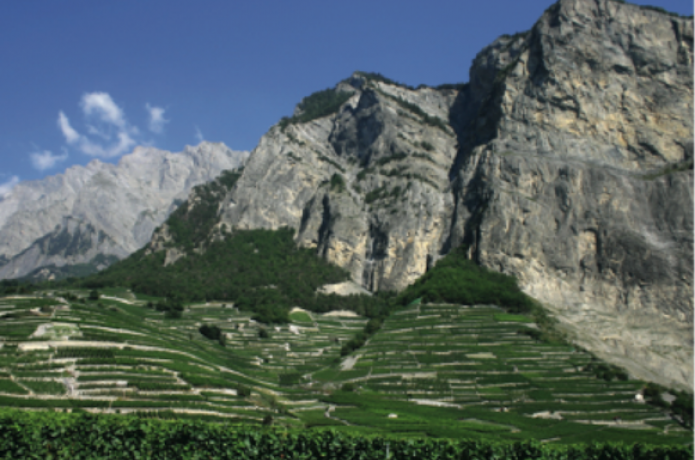Fendant: a symbolic Swiss white wine
- Tuesday 01 March 2016
Alongside Dôle, Fendant is the most well-known Swiss wine both at home and abroad. Many visitors discover it during their skiing holidays in the Valais region, while for Swiss natives, it's as much a part of daily life as a morsel of cheese.
Fendant is a Chasselas wine from the Valais region. Vintages from other Swiss regions from the same grape variety are not entitled to use this appellation. It is usually a dry wine, light and refreshing, with great minerality and floral hints. Ideal for quenching your thirst or hydrating your palate when you take a break.
Light and aromatic
In cooking, Fendant is considered the best wine to drink with fondue, raclette and other dishes made of all kinds of cheese. This is not surprising, as compared to other Swiss white wines it's rather light, both in terms of its aromatic palette and its alcohol content (usually between about 11 and 12.5 % vol). It can also be a little fizzy (CO2). Two reasons explain this successful combination: firstly, Fendant is a variety which perfectly reflects the subtle nuances of the terroir on the palate; secondly, it has a freshness which makes up for its relatively low acidity in some years. Possibly adding a little CO2 should not be detrimental to the harmony of the wine.
Practically all winegrowers in Valais produce a variety of Fendant wine, which is best drunk young, between 1 and 3 years after bottling. As it matures, it loses its lively, vigorous aroma. It should ideally be served chilled, at around 8 oC. In winter, you can put the bottle in the snow to keep the wine cool.
The Burgundy example
The "Fendant" appellation does not go back to the dawn of time, and it was not always limited to the Valais region. In the 18th century, the name was often used in the Vaud and Neuchâtel cantons to designate both the variety and the wine. It seems that Fendant owes its name to a particular feature of the Chasselas berry, which doesn't burst but implodes when you press it with your fingers.
It was only in the early 20th century that winegrowers outside of Valais began to associate the Chasselas appellation with the villages or communities (Aigle, Epesses, Dézaley) where it was made, reflecting what was happening across the French border, in Burgundy.
An exclusive appellation
The "Fendant" appellation has survived over time. First introduced to Valais in 1850, it has been protected there since 1966. From this date on, all Chasselas wines from Valais have been called Fendant, a name that no other winegrowing region has the right to use.




